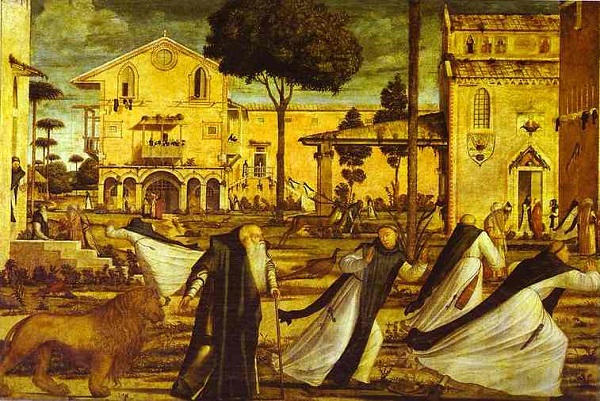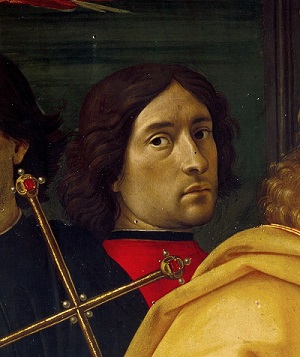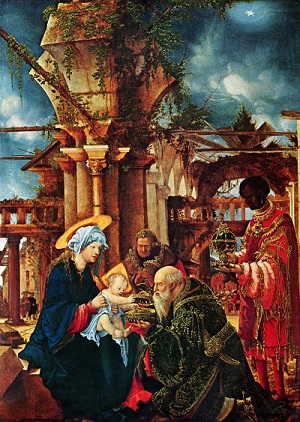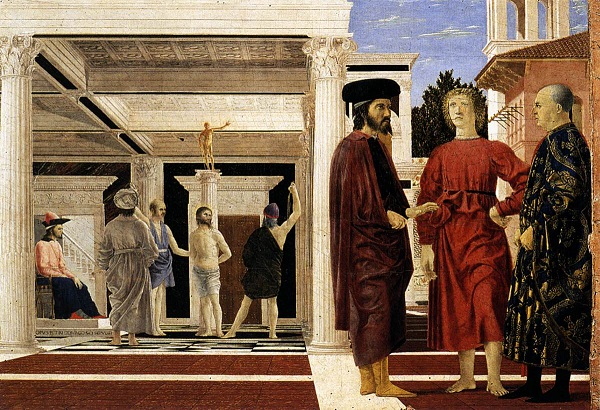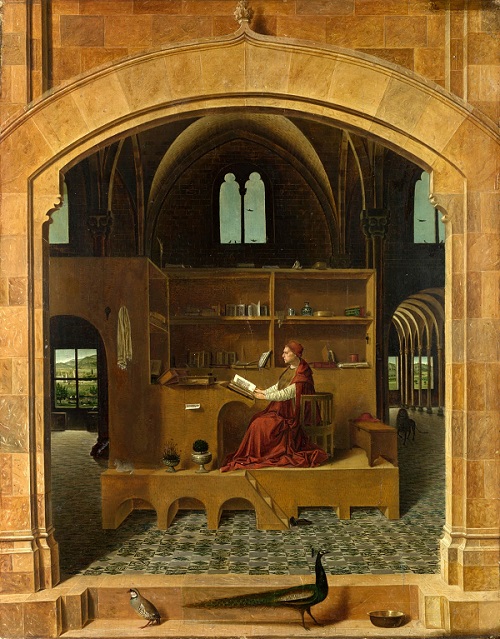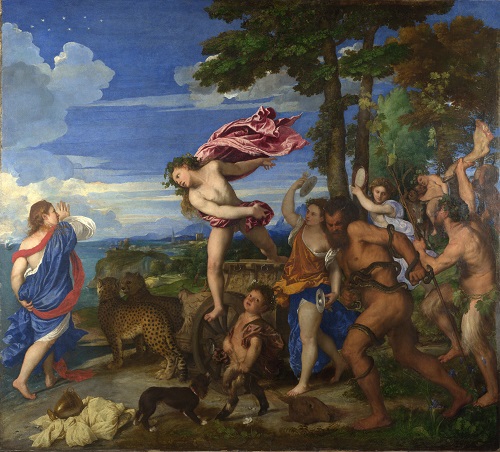
This dynamic scene captures the highly charged moment when Bacchus, Roman God of wine, first sets eyes on Ariadne, daughter of King Minos of Crete, and the two fall in love. The painting is full of sublime movement, from the leaping Bacchus with his rippling cloak to the dancing forms of the revellers who follow the god and play their musical instruments. This rather chaotic retinue fills the lower right-hand section of the painting, while the left side is dominated by the beautifully draped figure of Ariadne.
Bacchus is caught as if in mid air, and is the focal point of the composition, His expression, shows the astonishment of seeing the beauty of Ariadne, and is elegantly and poignantly captured. Furthermore, just like new love, the painting truly glows – Titian’s brilliant colours, especially the pure ultramarine of the sky and the women’s garments, give the painting exuberance and harmony. It is a really uplifting work, which brims with energy and passion, and brings alive this celebrated mythological love story.
The details of Bacchus and Ariadne closely follow those in the original Latin poems by Ovid and Catullus. After helping her lover, Theseus, slay the Minotaur – the fabled beast imprisoned in a labyrinth – Ariadne has been abandoned on the Greek Island of Naxos. When Bacchus arrives on the island in his chariot and sees Ariadne, it is love at first sight and the two late marry.
Alfonse d’Este, Duke of Ferrara, a wealthy patron of the arts, commissioned Bacchus and Ariadne as part of a series of mythologically themed paintings for his small private picture gallery, the camerino d’alabastro (alabaster cabinet). Titian took on three of the paintings – the other two are the Worship of Venus and Bacchanal of the Adrians – after much persuasion from the duke. Bacchus and Ariadne was the second painting and the artist, who was in great demand and working on big religious and secular commission, took two and a half years even to start it. The patronage of such a sophisticated, cultured nobleman as Alfonso was important for the ambitious Titian and he created a magnificent celebration of love that would both please the duke and flatter his intelligence.

